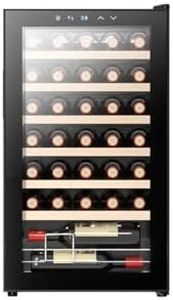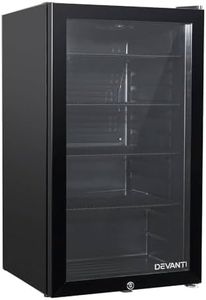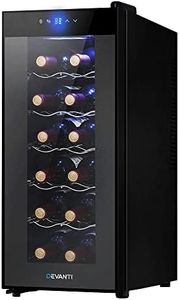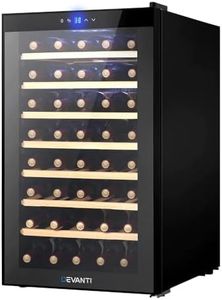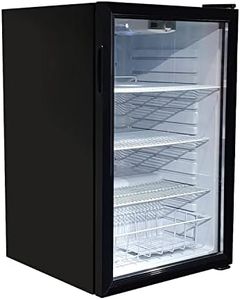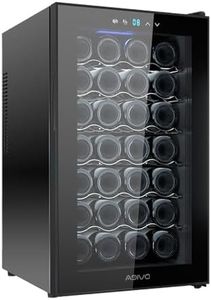We Use CookiesWe use cookies to enhance the security, performance,
functionality and for analytical and promotional activities. By continuing to browse this site you
are agreeing to our privacy policy
8 Best Small Wine Fridge
From leading brands and best sellers available on the web.Buying Guide for the Best Small Wine Fridge
Choosing a small wine fridge is an important step for anyone who wants to keep their wines at the ideal temperature and preserve their flavors. The right fridge will depend on how much wine you have, the types of wines you enjoy, and where you plan to place the fridge. By focusing on the most important features, you will be able to find a fridge that suits your storage needs and fits well within your living space. Remember to consider both your current wine collection and any possible growth in the future.Capacity (Bottle Count)Capacity refers to how many bottles the wine fridge can hold. This is typically listed as a number assuming standard 750ml bottles, but actual capacity can vary if you store larger or uniquely shaped bottles. If you only have a few bottles at a time, a compact fridge (6-12 bottles) is usually enough. For those with growing collections, look for fridges with space for 18-24 bottles or more. Think about how many bottles you buy and consume each month, and allow some extra space for unexpected purchases or gifts.
Temperature Range (and Control)Temperature control is crucial for wine storage, since different types of wine thrive at different temperatures. Most small wine fridges offer a range between about 40°F to 65°F (4°C-18°C). Lower temperatures are great for white and sparkling wines, while a warmer setting is better for reds. Single-zone fridges keep all bottles at one temperature, which works if you mostly drink one type of wine. Dual-zone fridges allow you to set two different temperatures, ideal if you enjoy both reds and whites. Think about what types of wine you usually store, and choose a temperature range and zone configuration that fits your habits.
Size and DimensionsThe physical size of the fridge matters, especially if you have limited space in your kitchen, living room, or bar area. Check the external measurements to make sure the fridge will fit where you want it. Pay attention to both width and depth, and consider door swing space if it's a freestanding model. Compact fridges can sit on countertops or under counters, while slightly larger models might work best as standalone units. Measure your available space before purchasing to ensure a good fit.
Shelving TypeShelving can be fixed or adjustable, and is often made of wire, metal, or wood. Adjustable shelves give you flexibility to store larger or odd-shaped bottles, while fixed shelves usually maximize standard bottle storage. Some shelves are designed to slide out for easier access. If you collect wines in non-standard bottles (like Champagne), look for fridges with more flexible shelving. Think about whether you'll need to access bottles from the back, and whether you prefer a particular shelf material for looks or ease of cleaning.
Compressor vs. Thermoelectric CoolingSmall wine fridges generally use either thermoelectric or compressor-based cooling. Thermoelectric fridges are quieter and more energy-efficient, but they may struggle in very warm rooms and are typically better for smaller fridges. Compressor-based fridges cool more powerfully, making them better in hot environments or for larger collections, but can be a bit noisier. Think about the ambient temperature where you’ll keep the fridge and your noise tolerance to decide which cooling method suits you best.
UV ProtectionWine can be damaged by exposure to sunlight, and many small wine fridges offer glass doors with UV protection to block harmful rays while letting you see your collection. If the fridge will be placed in a sunny room or under bright lights, choose a model with a UV-protected door to help keep your wines safe. If it will be placed in a dark or windowless spot, this may be less important.
VibrationVibration can disturb the sediments in wine, especially if you’re storing bottles for months or years. Thermoelectric fridges tend to have less vibration than compressor ones. If you collect wines to age them, or plan to keep bottles for the long term, minimizing vibration is an important factor. If you usually drink bottles soon after buying, this factor is less critical.

